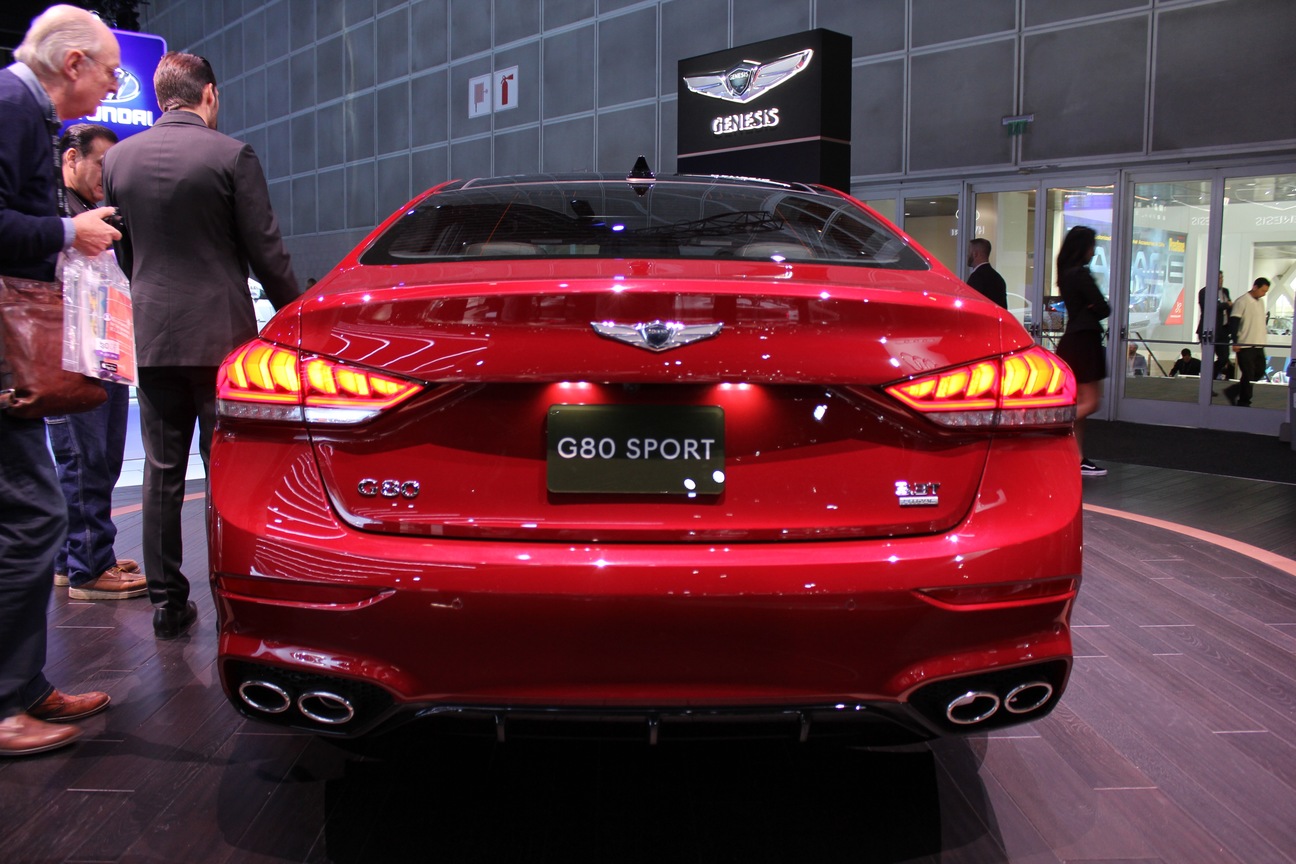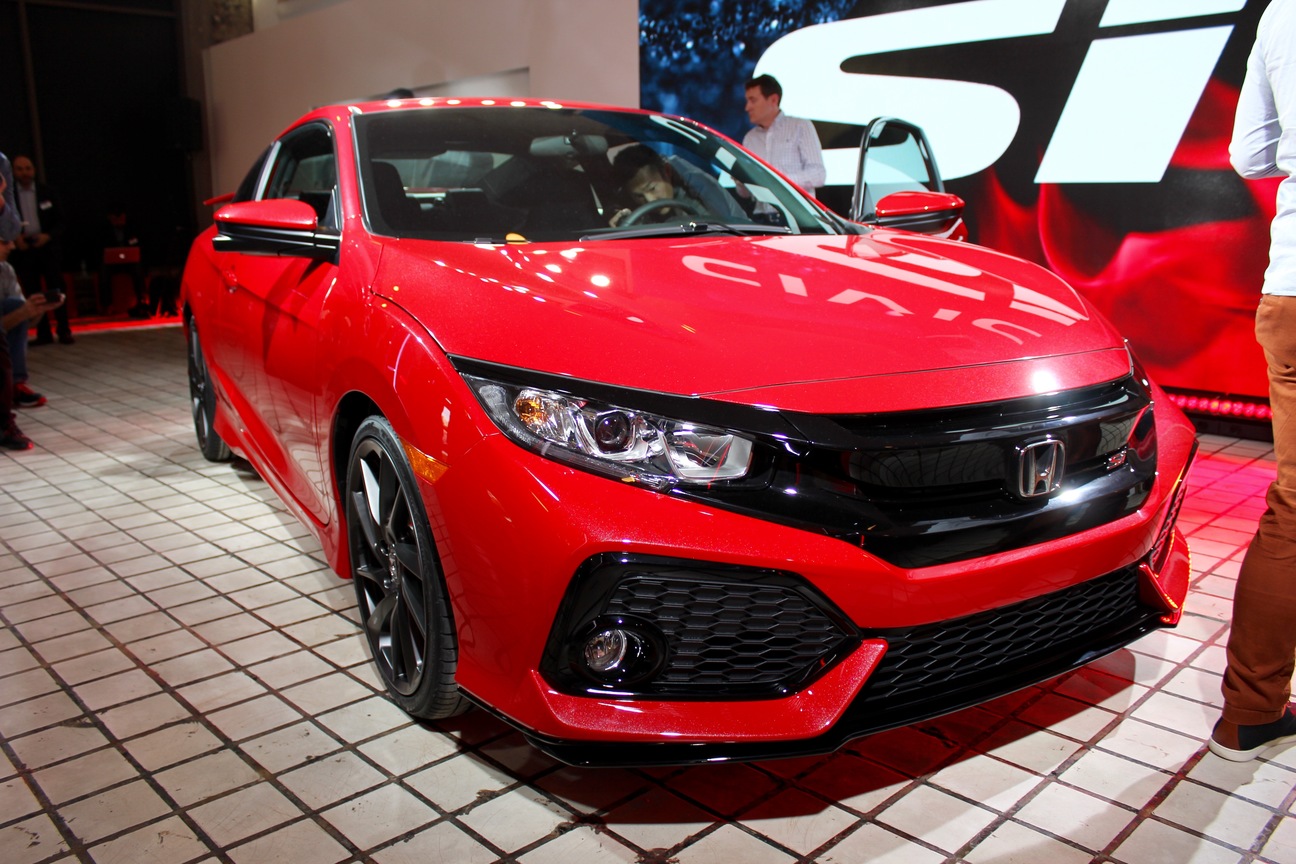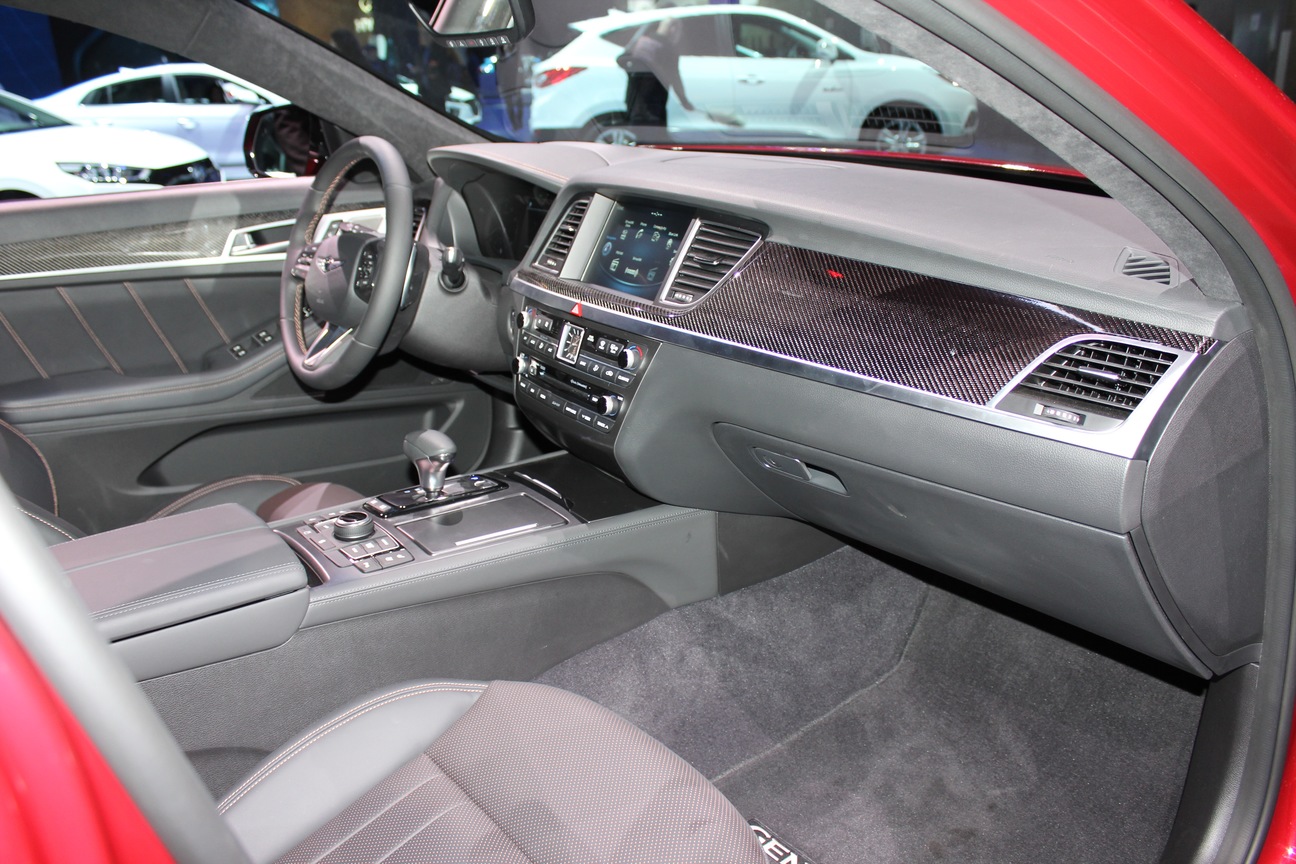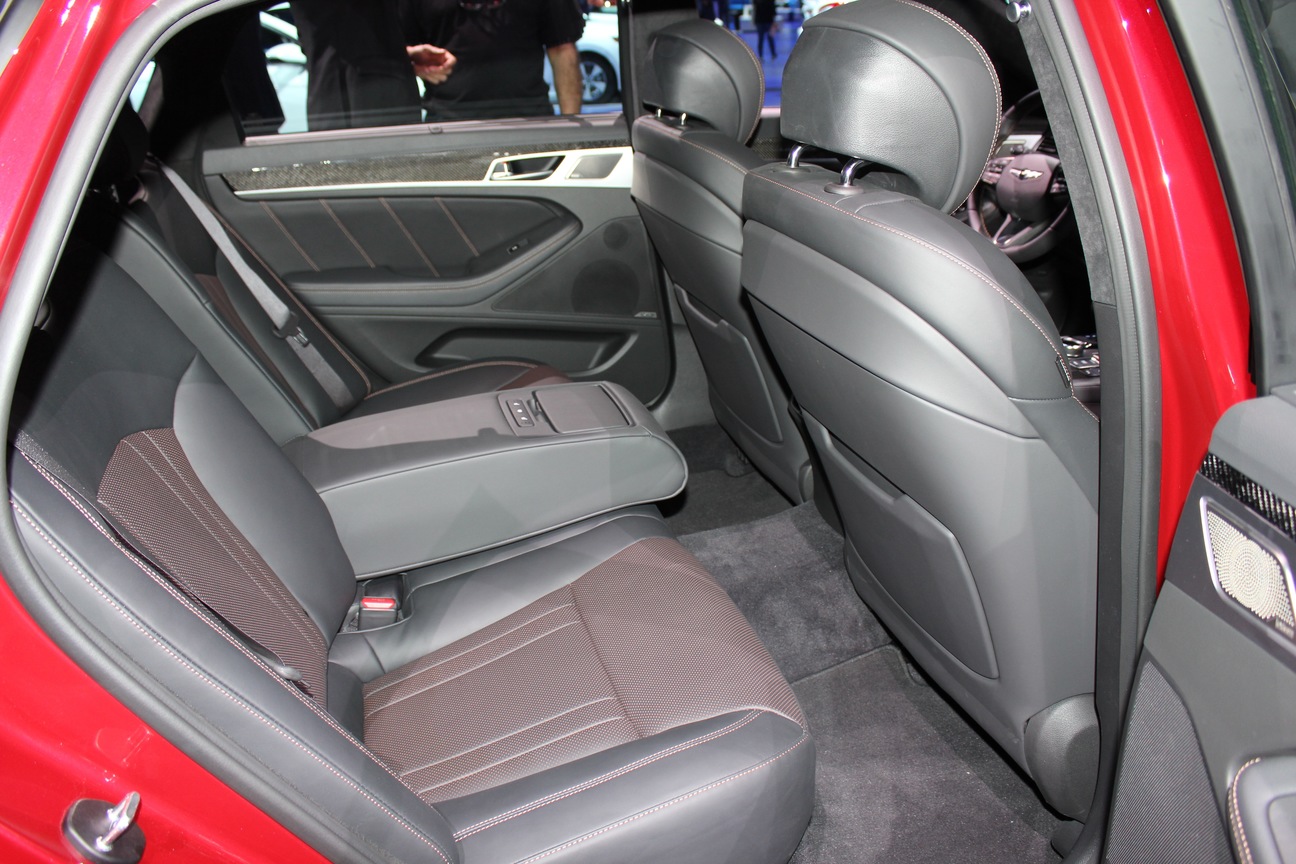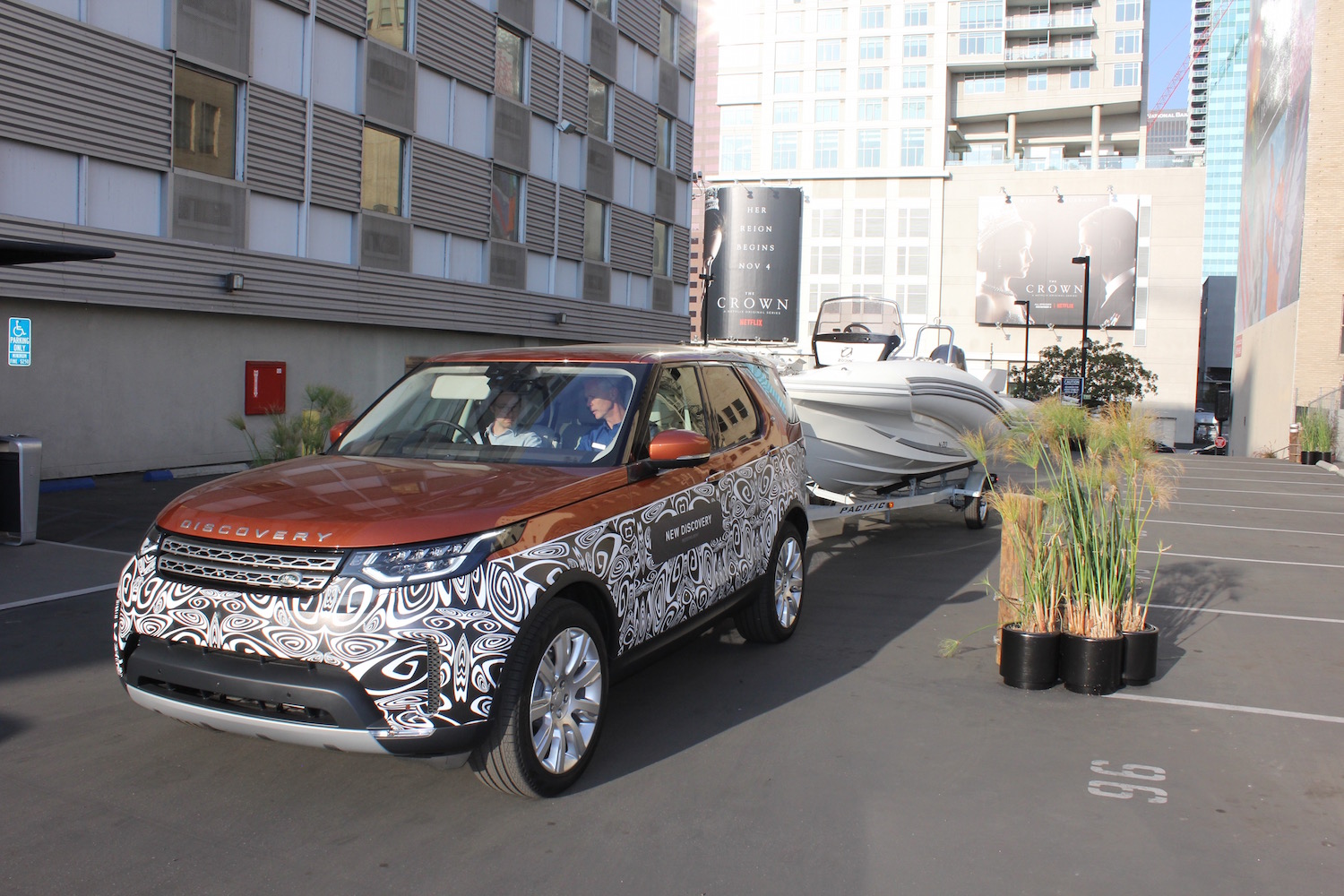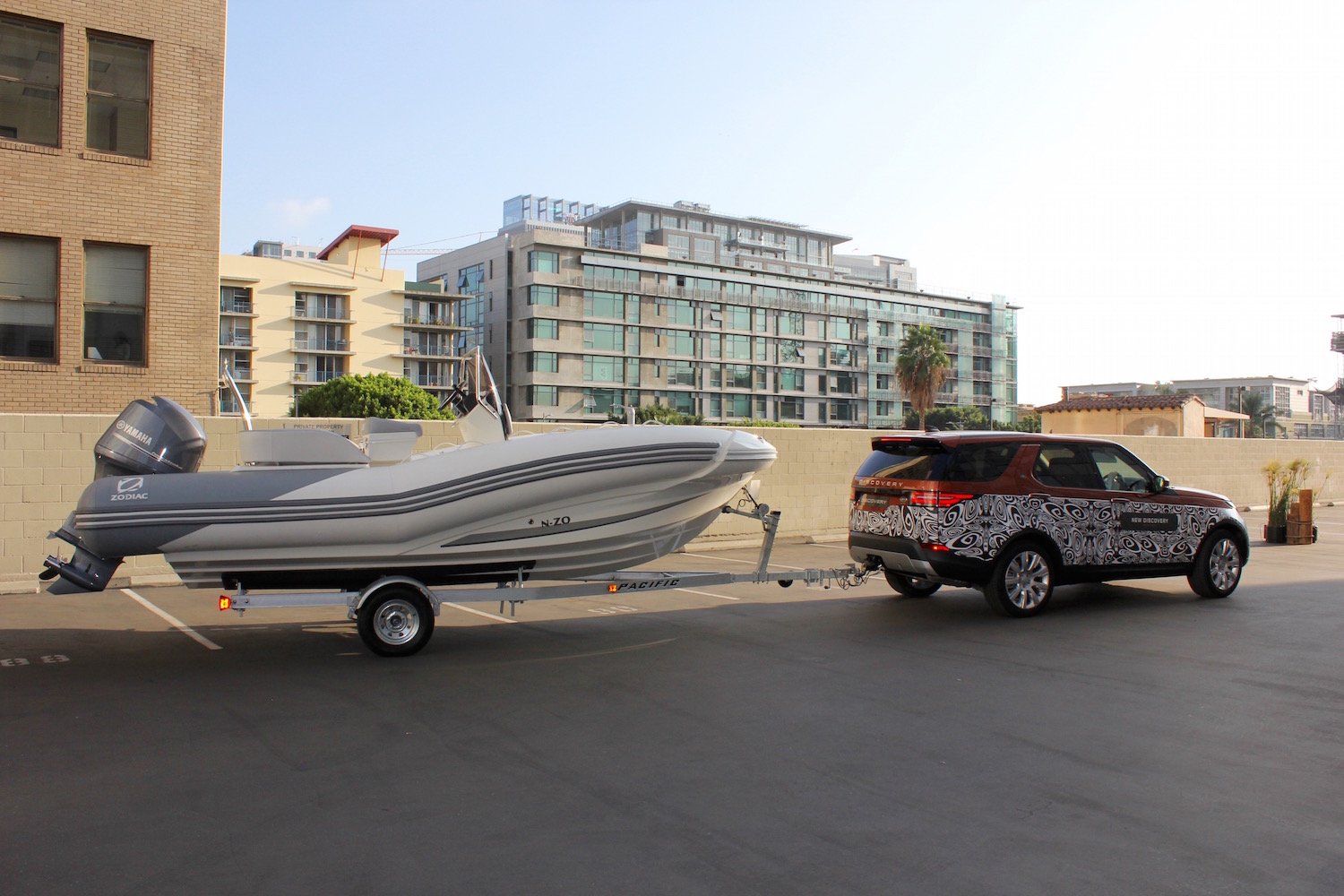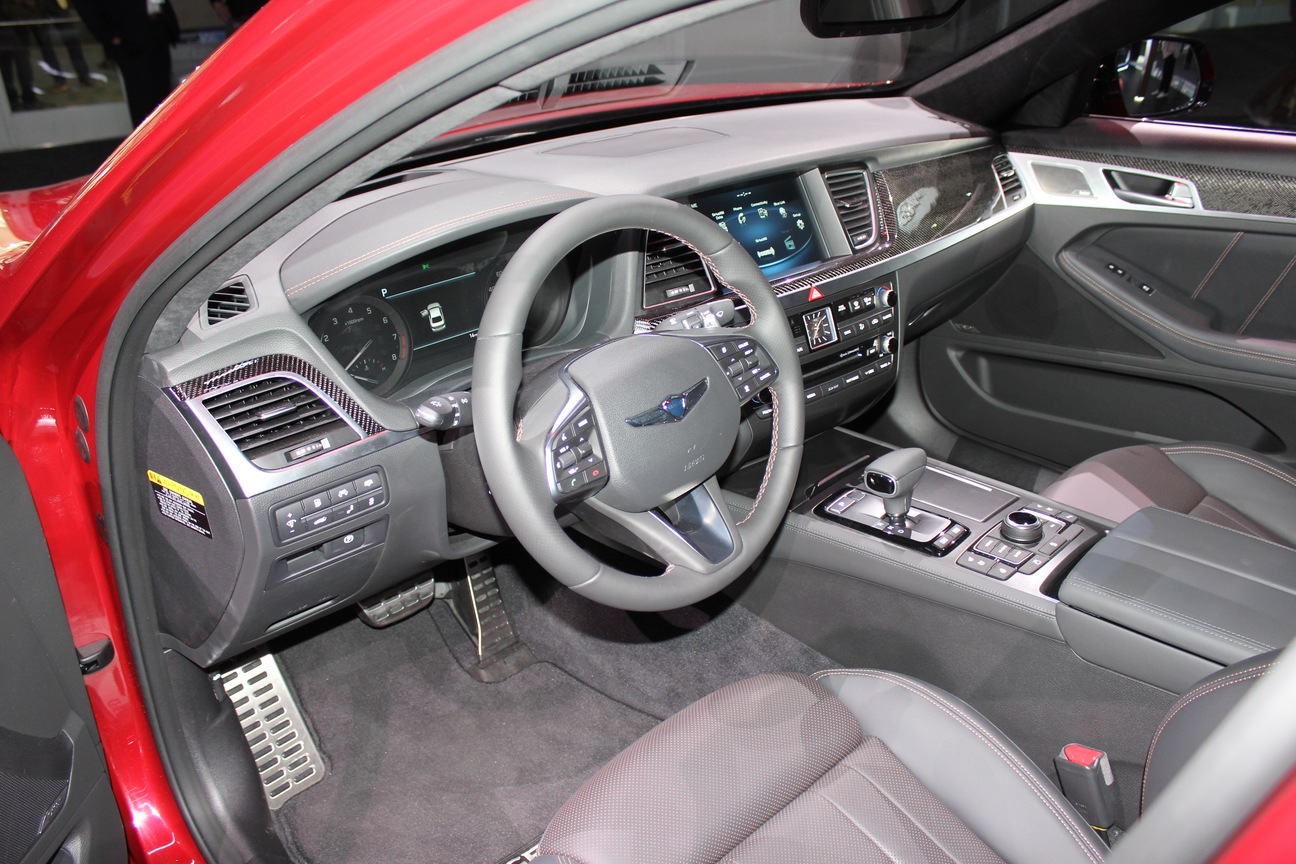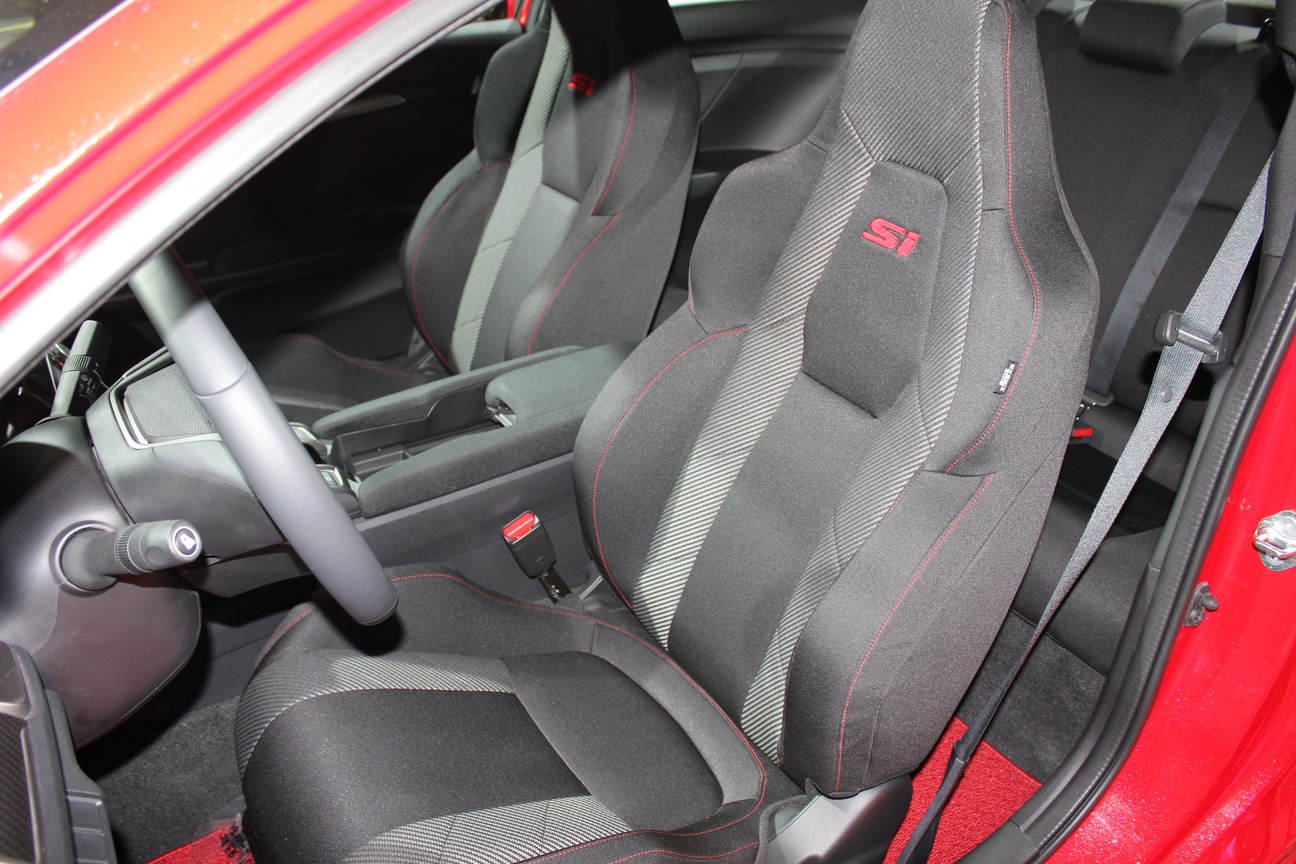For the first time ever, Honda will offer two performance versions of the Civic in the U.S. We’ll get the Civic Type-R that was never available here before, as well as an updated version of the Civic Si. The latter model makes its debut in “prototype” form at the 2016 Los Angeles Auto Show.
Honda calls this Civic Si a “prototype,” but the differences between it and the production version will likely be superficial. The Si is the last Civic variant to transition to the new 10th-generation platform that debuted last year. It will be available only as a two-door coupe or four-door sedan, although Honda does offer a five-door hatchback version of other Civic models as well.
The Civic Si will use a 1.5-liter turbocharged four-cylinder engine, presumably based on the one used in other Civic variants. Honda didn’t say how much power the Si engine will produce, however. Drive goes to the front wheels exclusively through a six-speed manual transmission. No automatics here.
Honda promises performance upgrades over the base Civic that will include an active steering system, active dampers, a limited-slip differential, and optional performance tires. Visual changes are fairly subtle, although the 19-inch wheels, rear spoiler, and center-exit exhaust (like the Civic hatchback) do make quite a statement.
The interior boasts Si-specific front seats, and plenty of red accent stitching and Si badges. The driver’s TFT display and the central display screen for the audio system are also illuminated in red, which should look pretty cool at night. Aluminum pedals and what Honda calls “Dry Metal Carbon” trim (it looks like fake carbon fiber) on the dashboard complete the look.
The Honda Civic Si coupe and sedan will go on sale next year as 2017 models. The Civic Type-R, which will probably be more hardcore than the Si, will launch later in the year. The launch of these performance models will complete Honda’s rollout of the 10th-generation Civic, which began last year with the launch of the base sedan model.
